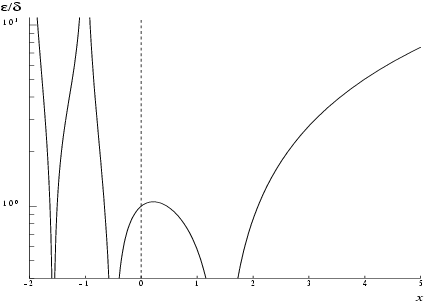nag_gamma (s14aac) evaluates an approximation to the gamma function
. The function is based on the Chebyshev expansion:
and uses the property
. If
where
is integral and
then it follows that:
- for , ,
- for , ,
- for , .
There are four possible failures for this function:
| (i) |
if is too large, there is a danger of overflow since could become too large to be represented in the machine; |
| (ii) |
if is too large and negative, there is a danger of underflow; |
| (iii) |
if is equal to a negative integer, would overflow since it has poles at such points; |
| (iv) |
if is too near zero, there is again the danger of overflow on some machines. For small , , and on some machines there exists a range of nonzero but small values of for which is larger than the greatest representable value. |
Let
and
be the relative errors in the argument and the result respectively. If
is somewhat larger than the
machine precision (i.e., is due to data errors etc.), then
and
are approximately related by:
(provided
is also greater than the representation error). Here
is the digamma function
.
Figure 1 shows the behaviour of the error amplification factor
.
There is clearly a severe, but unavoidable, loss of accuracy for arguments close to the poles of at negative integers. However relative accuracy is preserved near the pole at right up to the point of failure arising from the danger of overflow.
Also accuracy will necessarily be lost as
becomes large since in this region
However since
increases rapidly with
, the function must fail due to the danger of overflow before this loss of accuracy is too great. (For example, for
, the amplification factor
.)
Not applicable.
None.

